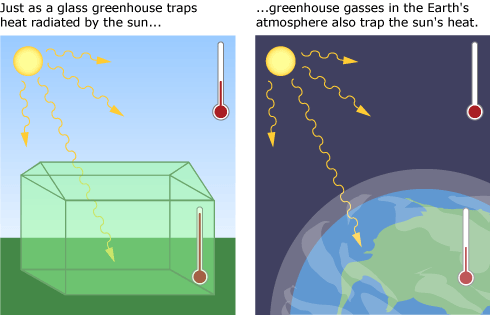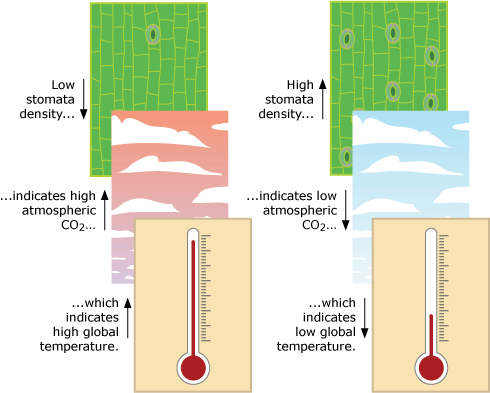Since carbon dioxide levels directly affect global temperatures, Jennifer’s work also provides an important picture of how Earth’s climate has changed over time. Carbon dioxide is a well known greenhouse gas — meaning that it acts like the glass in a greenhouse, trapping radiation from the sun and heating things up: the higher the level of carbon dioxide in Earth’s atmosphere, the higher the global temperature. The greenhouse effect is powerful: without any greenhouse gasses in the atmosphere, global temperatures would be about 20° C lower than today! And because we continue to release greenhouse gasses into the atmosphere as we drive our cars, manufacture products, and produce electricity, we can expect global temperatures to rise in the future.
Because of the powerful impact that carbon dioxide levels have on the greenhouse effect and global climate, Jennifer’s fossil stomata provide a broad picture of past global temperatures. Stomata can be used to directly estimate past carbon dioxide levels, and those carbon dioxide levels can then be used to make an indirect estimate of temperature. Typically (although there are exceptions to the rule), fossils with many stomata (low carbon dioxide) came from times of low global temperature, and fossils with few stomata (high carbon dioxide) came from times of high global temperatures.
- What have carbon dioxide levels been like throughout Earth's history? Read more in Putting it in perspective: Climate change yesterday and today.
- Learn more about the greenhouse effect on the Understanding Global Change site.
Get tips for using research profiles, like this one, with your students.


